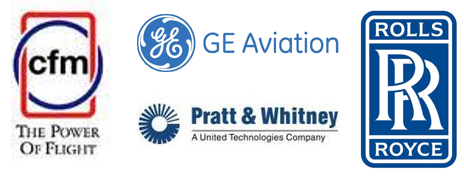Leeham News and Analysis
There's more to real news than a news release.
Engine OEMs forecast big hit to aftermarket revenue
Subscription Required
Now open to all readers.
By Scott Hamilton
May 5, 2020, © Leeham News: The COVID crisis will damage the aerospace aftermarket in ways that are only beginning to be understood.
As key companies report 1Q earnings, it’s clear that engine aftermarket revenue is going to take a major hit for years to come.
Engine companies like CFM, GE Aviation, Pratt & Whitney and Rolls-Royce, rely on aftermarket sales as the key component of their business plans.
The research and development money that goes into an engine consumes such huge amounts of cash that the OEMs don’t recoup their costs for 10-20 years. The aftermarket for parts, maintenance, repair and overhaul is where they make their profits in the meantime.
But this is seriously threatened by the virus crisis.
“The aftermarket for key programs took 4+ years to return to 2008 levels out of the Great Financial Crisis, and that was with traffic decline at a fraction of the declines today,” Bernstein Research wrote in a May 4 note to clients.
Engine Aftermarket
MTU currently sees passenger traffic returning to 2019 levels by the end of 2022. (This is one of the more optimistic forecasts.) It doesn’t see international traffic resuming until the fourth quarter this year.
Engine shop visits for freighter aircraft is up, though not enough to offset the decline in passenger aircraft engine MRO. GE Aviation CF6-80 engines, on widebody freighters, are the dominate increased shop visits.
Passenger MRO demand was off 20% in the first quarter. The full impact won’t be understood until the end of the second quarter, MTU said.
Pratt & Whitney GTF engines, with their well-publicized problems, are zero- or low-margin warranty work.
MTU provides MRO services for CFM56 and IAE V2500 engines. These power the 737NG/Classic and A320 families. With these oldest models unlikely to return service and the newer models likely to have slow RTS, it will be 2024 before previous shop visit levels are reached.
GE Aviation is cutting 13,000 jobs as its business takes a huge plunge. GEA employs 52,000. MRO visits were down 60% in April alone. New engine deliveries were off 45%.
Rolls-Royce plans to cut £750m in costs and capital expenditures this year and lay off up to 15% of its workforce. A key element of RR’s business model for decades is requiring airlines to enter into MRO agreements. With the well-known problems with the Trent 1000 engines, and a change in European accounting requirements, RR’s profit model was turned upside down.
Watching for trends
The global airline meltdown began in March. Through last week, there is too much volatility (as MTU put it) to make projections for recovery. MTU hopes some clarity will emerge by the time the second quarter financial reporting begins.
Some airlines in China built up service by last week to as much as 80% of its pre-COVID schedule. However, state-owned carriers (or effectively so) are not free-market examples.
The US Transportation Security Administration reports traffic is slowly increasing. But demand is still 95% below pre-crisis levels.
It’s unclear if a trend will be evident even after the second quarter.

